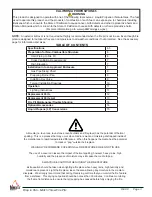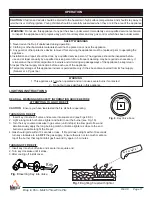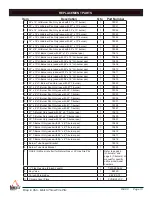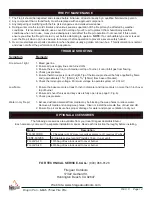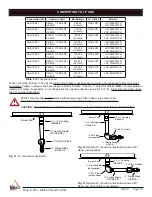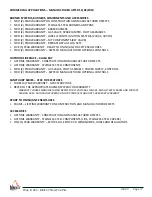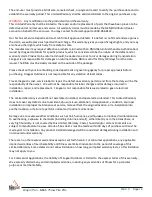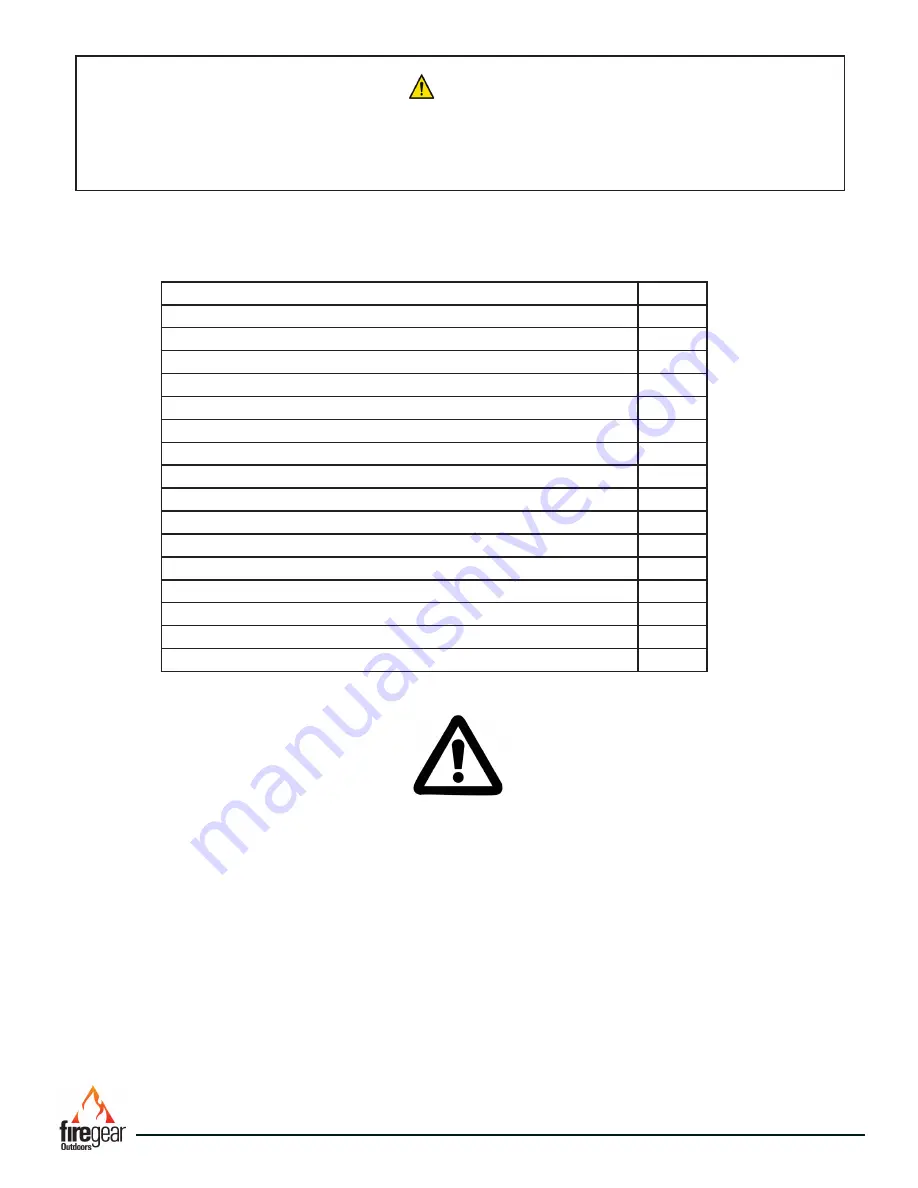
REV. C Page 3
Drop in Pan - Match Throw Fire Pits
Specifications
4-5
Preparation for Non-Combustible Structure
6
Hard Piping to Fire Pit
6
Cross Ventilation Requirements
7
High Elevation
7
Installation into an Approved Enclosure
7
Gas Pipe Sizing Chart
8
Preparing Burner Pan
9
Installing Key Valve
9
Typical Installation Drawings
10
Operation
11
Lighting Instructions
11
Replacement Parts
12
Replacement Parts List
13
Fire Pit Maintenance/Trouble Shooting
14
Optional Accessories
14
Liquid Propane (LP) Conversions
15
TABLE OF CONTENTS
NOTE:
An exterior lid/cover is not required but highly recommended when the fire pit is not in use. Even though fire
pits are designed for outdoors they are not impervious to all weather conditions if not protected. See the accessory
page for information and sizes.
All media (i.e. lava rock, lava stones, lava boulders and fire glass) has the potential of thermal
spalling. This is a process that may occur when media is wet and moisture gets trapped inside of
the material due to rapid temperature differences. When this happens the media has the potential
to crack or “pop” outside the fireplace.
WE HIGHLY RECOMMEND COVERING ALL FIRE FEATURES WHEN NOT IN USE
The use of a cover can lessen the impact of thermal spalling; however, heavy rains, high
humidity and the presence of moisture may still cause the media to pop.
ALWAYS USE CAUTION WHEN USING THE FIRE FEATURE
Extra caution should be taken when lighting a fireplace when heavy rains, high humidity and
moisture are present. Light the fireplace; leave the area allowing any moisture in the media to
dissipate. We strongly recommend that during this drying out time that you monitor the fire feature
from a distance. This drying out period should be no less than 30 minutes. Continue monitoring
the flame from distance to ensure that all popping has ceased before fully enjoying the fire.
CALIFORNIA PROPOSITION 65
WARNING
This product is designed to operate with one of the following fuel sources: Liquid Propane or Natural Gas. The fuel
used to operate this product, and the products of combustion of such fuel, can expose you to chemicals including
Benzene which is known to the State of California to cause cancer, birth defects and other reproductive harm and
Carbon Monoxide which is known to the State of California to cause birth defects or other reproductive harm.
(For more information go to: www.p65Warnings.ca.gov.)



